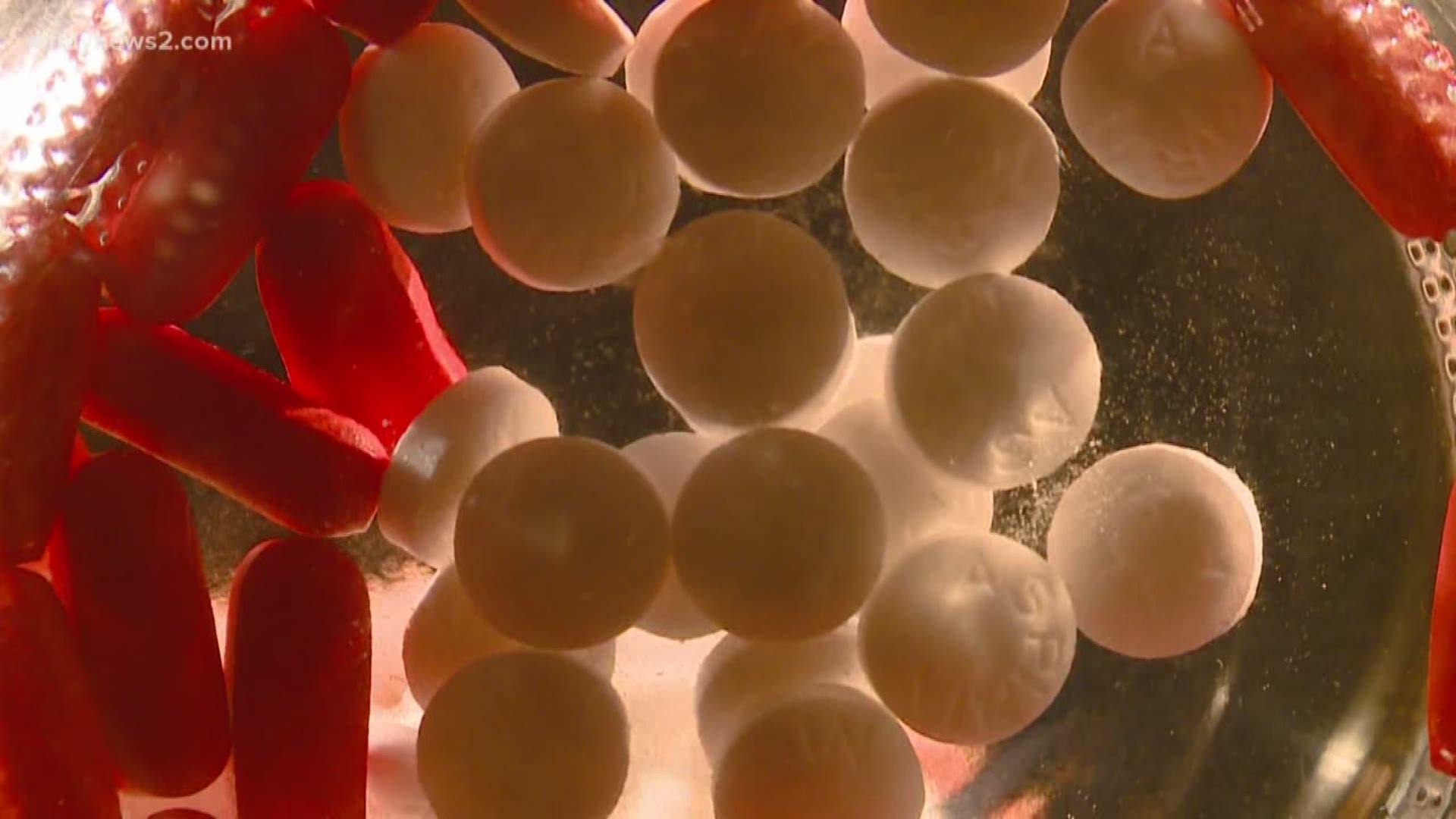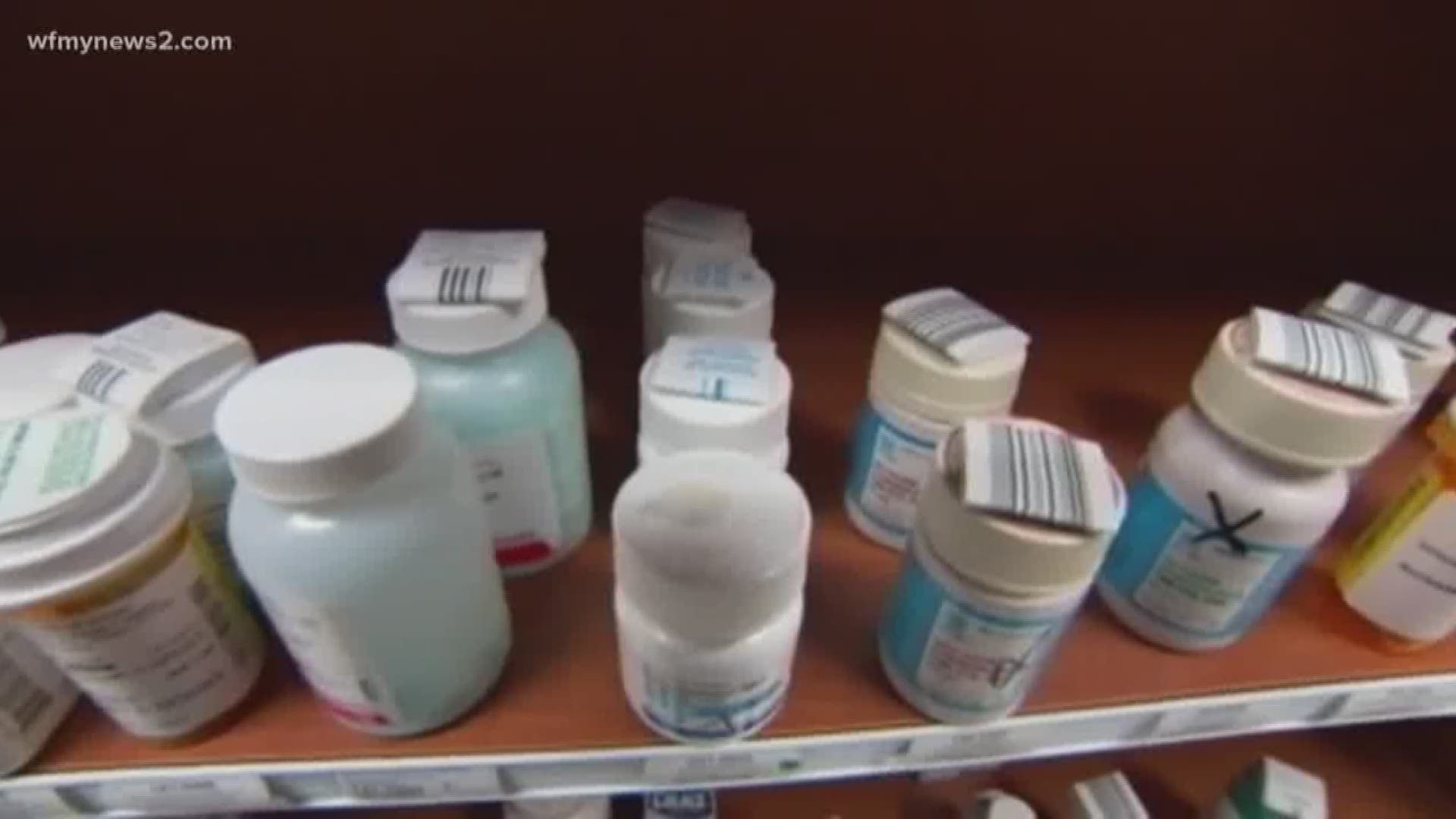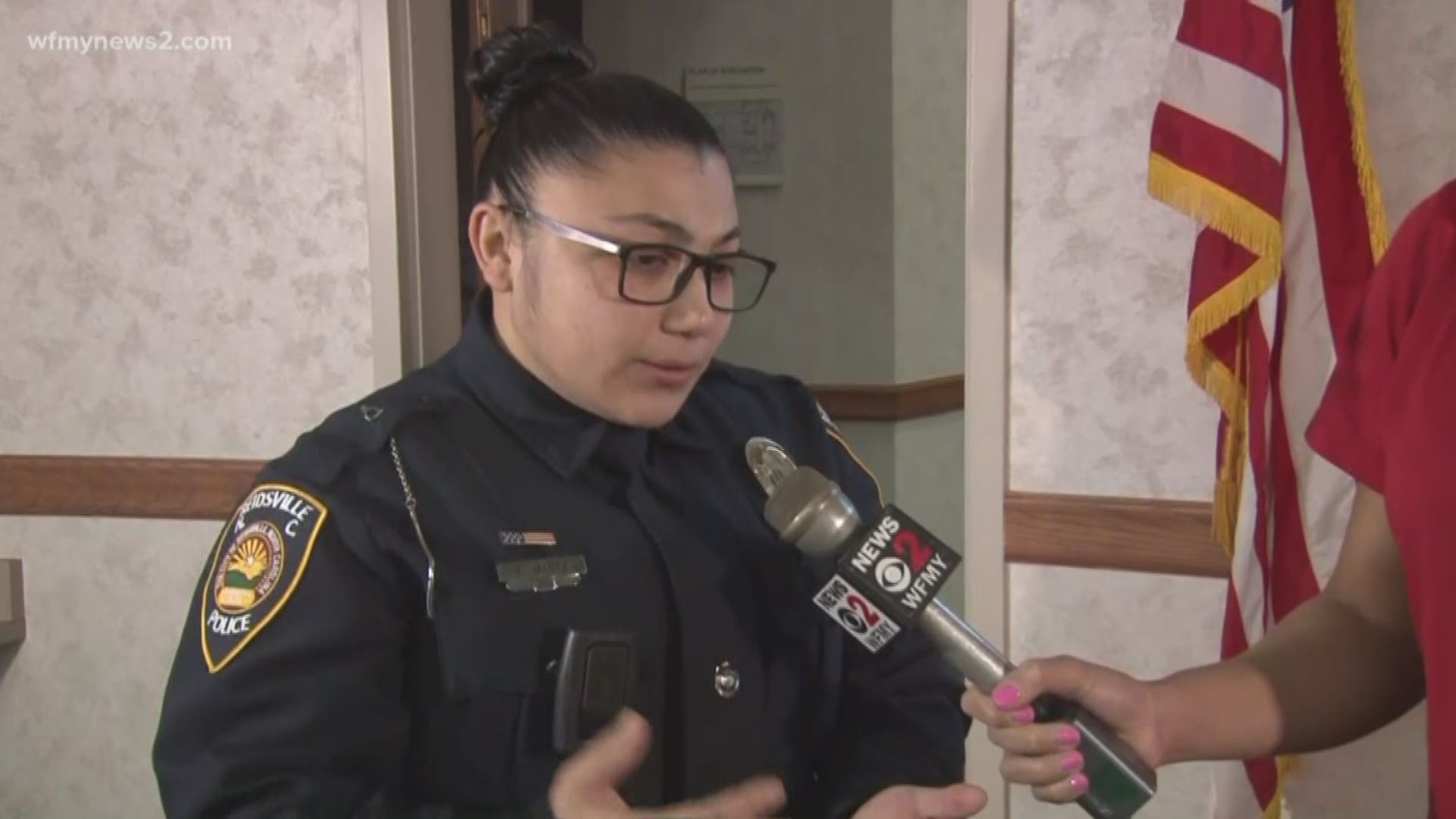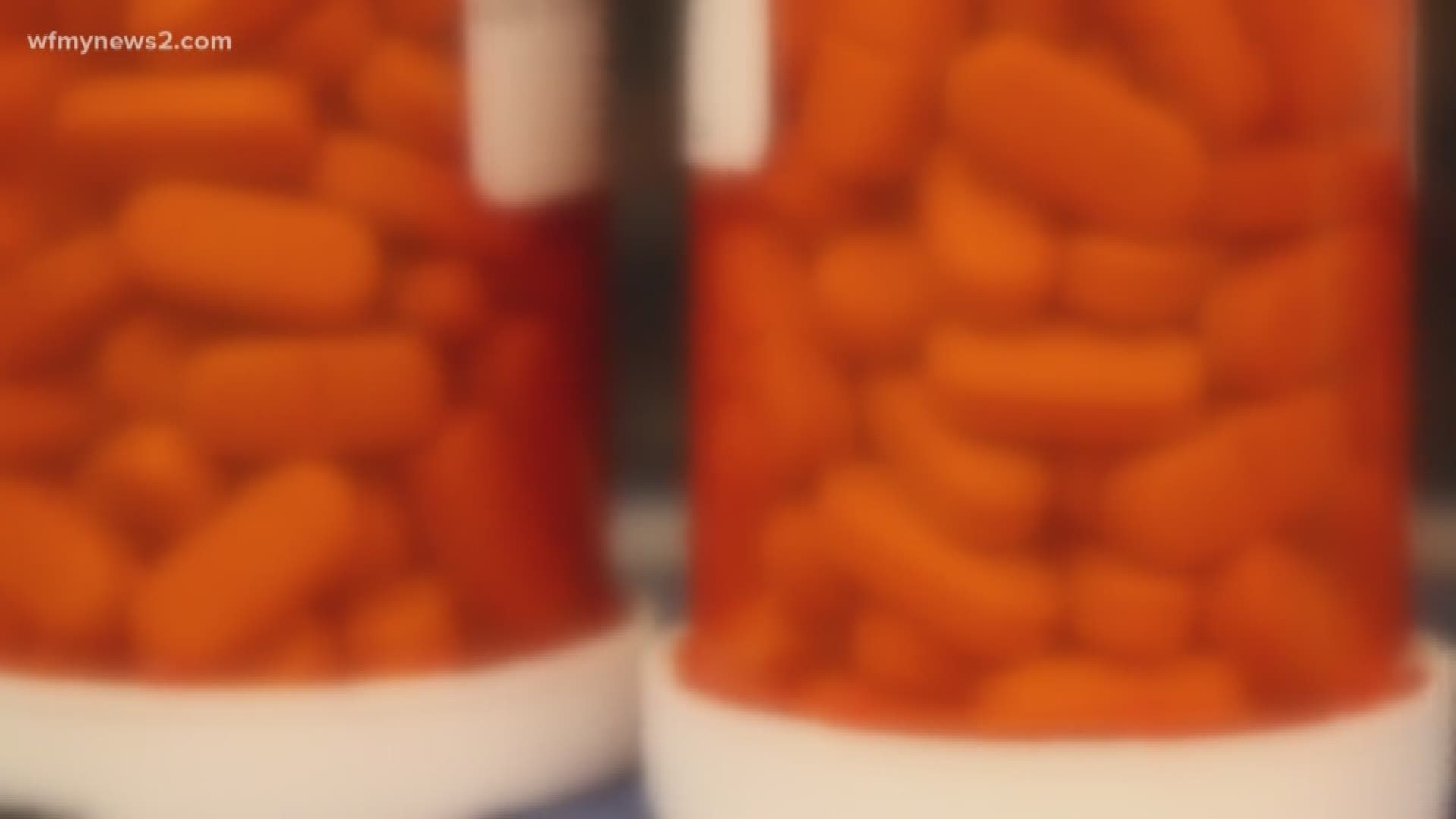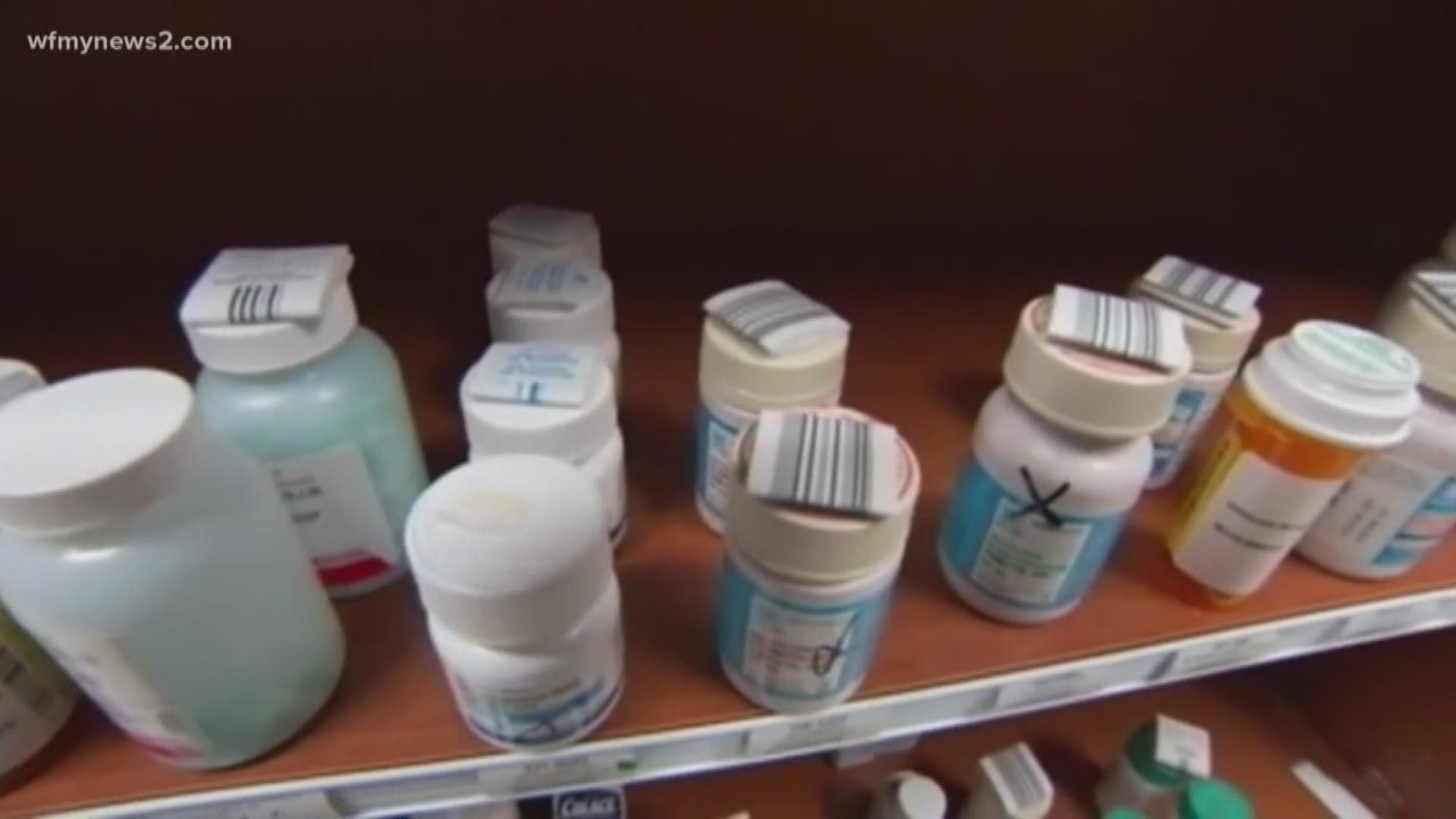REIDSVILLE, N.C. - Opioids are killing children and teens in the U.S.
That's according to a recent study by Yale University researchers published in the journal JAMA Network Open.
It shows nearly 9,000 children and teens died from poisonings from opioids between 1999 and 2016.
Over the 18 years, the mortality rate for youth nearly tripled due to opioid poisonings.
"What began more than 2 decades ago as a public health problem primarily among young and middle-aged white males is now an epidemic of prescription and illicit opioid abuse that is taking a toll on all segments of US society, including the pediatric population," researchers wrote. "Millions of children and adolescents are now routinely exposed in their homes, schools, and communities to these potent and addictive drugs."
The study also shows more than 80 percent of the deaths to children and teens were unintentional.
Five percent were from suicide and about 2 percent from homicide.
The majority of the deaths happened away from a medical setting, with 38% occurring in homes.
"This public health problem is likely to grow unless parents, legislators, public health officials, and clinicians - including physicians who prescribe opioids to adults - begin to take a wider view of what is a systemic crisis," researchers wrote. "Isolated solutions that fail to account for how entire families and communities are affected by adult opioid use are unlikely to lead to a substantive reduction in opioid deaths for either children or adults."
Opioids are devastating families and communities across the nation, including North Carolina.
The state is facing an opioid epidemic due to decades of prescribing more opioids at higher doses.
According to the North Carolina Department of Health and Human Services, more than 12,000 North Carolinians died from opioid-related overdoses from 1999 to 2016.
The state is currently working to connect people with preventative healthcare, substance use disorder treatment, and community supports.
Even though the opioid crisis can feel overwhelming, there are things you can do as a parent to protect your children.
D.A.R.E. America, an education program, offers a free online opioid lesson for students, parents, and members of the community.
The program teaches users about the origin of opioids, dangers, addiction, and how to stay safe and healthy.
The Reidsville Police Department is currently using the D.A.R.E. America program in schools to protect help protect young students.
The mission is to encourage students to make good choices and provide the youth with skills to combat peer pressure, gain support, and resources for making decisions about their personal health and wellbeing.
To learn more about the free online D.A.R.E America program to fight opioids, click here.
To learn more about North Carolina's Opioid Action Plan, click here.
Here are a few tips to help protect your kids from the opioid epidemic:
Learn the facts: You may have heard of heroin. This is a type of opioid. Another type of opioid is a pain medication that requires a prescription. These are called prescription opioids, or pain medications. These opioids are also sometimes called painkillers or pain pills. Prescription opioids or pain medications are provided by doctors for pain relief. They are typically provided to adults, but on some occasions, a doctor could prescribe a child or teen a pain medication if they are having surgery or have been injured.
- Prescription opioids are easy to get, and many teens don't realize they can be as harmful as illegal street drugs when misused
- 4 out of 5 people who use heroin began by misusing prescription pain medications. Percocet, OxyContin, and Vicodin are a few commonly prescribed pain medications
- 1 in 4 teens report they've misused or abused a prescription drug at least once
- 2 out of 3 teens abusing prescription pain meds say they get them from family or friends.
- Some teens hand out or sell extra pills of their own, or pills they've gotten or stolen from friends or family members
- Prescription pain medications are especially dangerous for teens because their brains are still developing
Talk to your kids: You want to protect your kids from the harsh realities of life, but addiction can happen to anyone. It's important to make sure they understand how dangerous these drugs can be and how quickly addiction can happen. You can talk to your kids at a level that's right for their age.
- There is no "perfect time." Use downtime, like driving in the car together or waiting at an appointment. Take advantage of everyday moments to start the conversation: a news story about opioid addiction, a TV show, or something that happened in your community. You can ask, "Do you have any questions about that?" to get started.
- There is no "perfect talk." Simply talking to your kid helps protect them. Emphasize the danger of prescription pain meds.
- Remind them that you care and keep the conversation focused on them: Don't talk about your own substance use –if you've used any. Sharing details about past (or present) use can undermine your message.
- One talk isn't enough— especially for teens.
- Your child might not seem like they're listening, but keep talking.
- It could take a few conversations to have an impact, but you will make a difference.
Rethink opioids for pain relief: Talk to your child's health care provider. Perhaps your child needs surgery, such as oral surgery, or your child has a sports-related injury. A doctor or dentist may recommend prescription pain relievers (opioids).
- Be sure to talk with your child's healthcare provider about non-opioid pain relief options. There are non-opioid pain relievers, and some of them are over-the-counter.
- Keep in mind that your child could be offered prescription pain meds from a friend who has a prescription. Let your child know it is never okay to share these meds.
Keep prescription medications out of reach: Safely get rid of any leftovers.
- 2 out of 3 teens abusing prescription pain meds say they get them from family or friends
- Some teens hand out or sell extra pills of their own, or pills they've gotten or stolen from friends or family members
- Take steps at home to keep medication out of reach:
- Do a check of your family's prescriptions: Could any of the prescriptions be addictive or misused?
- Keep prescription pain meds in a spot that only you can get to them. If possible, keep all medicines - both prescription and over-the-counter - in a locked cabinet or other secure place that kids can't access.
- If your child has a prescription, make sure you hold onto the pill bottle for them.
- Do a regular inventory (e.g., check how many pills are left) of any prescription meds that are in your home.
- Get rid of leftover (unused) prescription drugs – but be sure to do it safely. Know before you throw.
- You can also bring unused prescriptions to Prescription Dropbox locations. Find one in or near your town to safely get rid of your leftover prescriptions.
Dispose of medication safely:
- Keep medications in their original containers. Leave drug names visible to help identify the contents if they are accidentally swallowed. Cross out other personal information on labels to make it unreadable.
- Make the meds as difficult to consume as possible. For pills, add some water or soda to dissolve them, For liquids, add inedible material like cat litter, coffee grounds or dirt.
- Close the lids and secure with tape.
- Check prescription dropbox locations to see if there is a permanent waste medication collection site in your town or city. If not, hide medication containers in the trash. DO NOT put them in your recycle bin!
- The information sheet that came with your medication may tell you to flush it down the drain.

